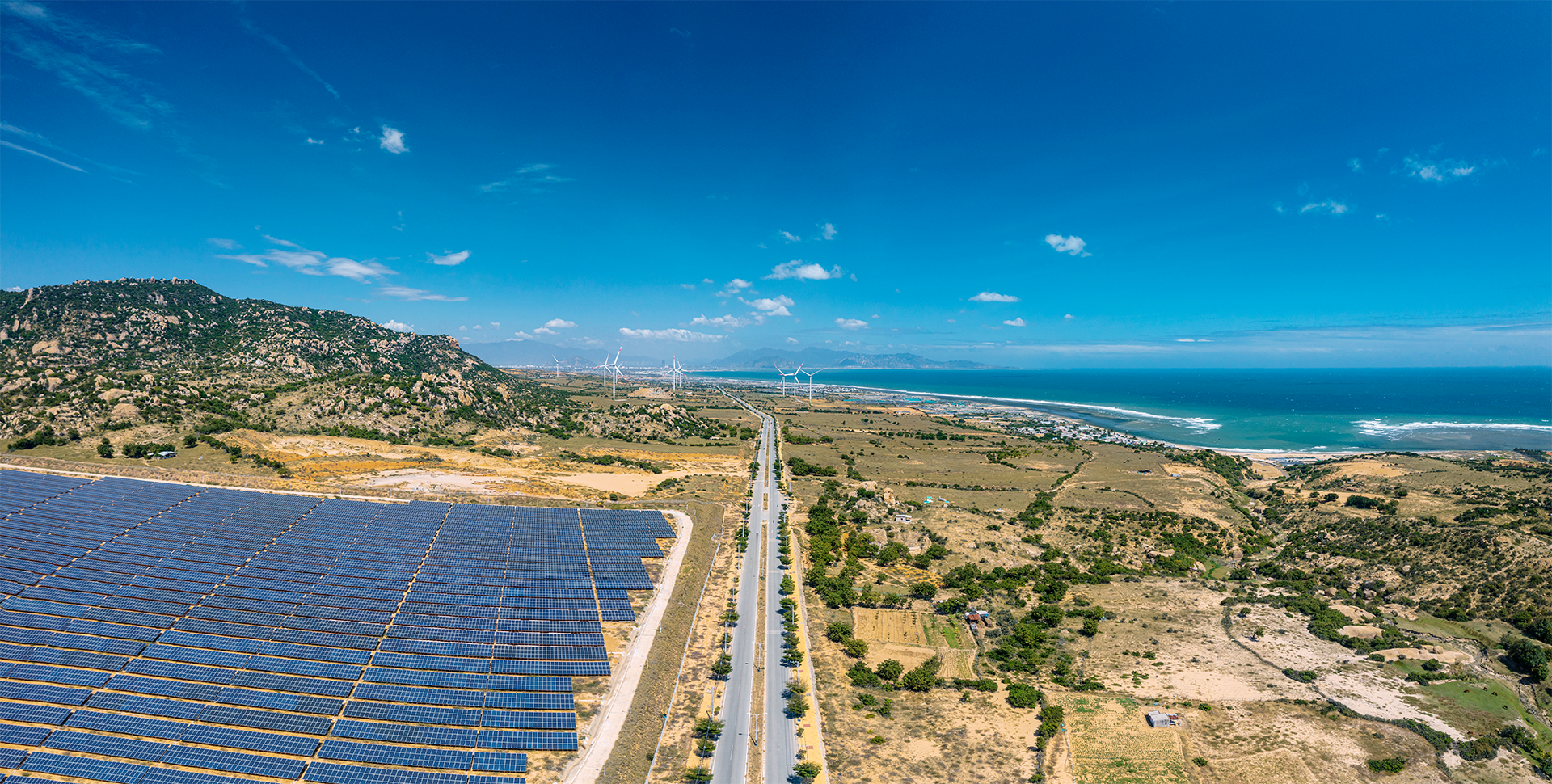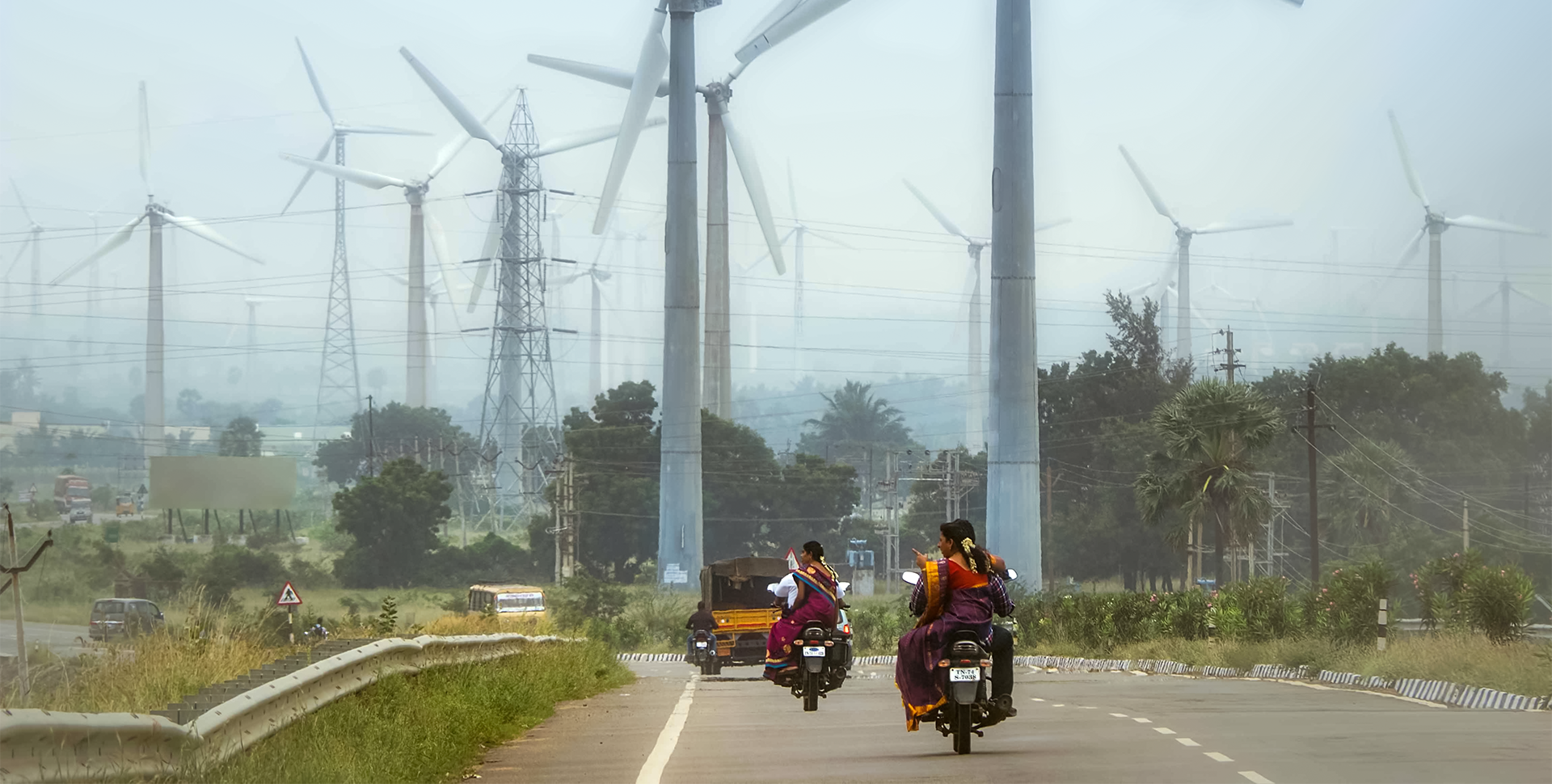- Home
- Sustainability
- Creating solutions for sustainability
- Strengthening risk resilience: 2021 highlights
- Renewables and energy transition
Renewables and energy transition
Insuring offshore wind farms
We offer a range of re/insurance solutions to manage the risks of different kinds of renewable energy projects, in line with our 2030 Sustainability Ambition to advance the energy transition. As of the end of 2021, Swiss Re had written re/insurance for more than 8 870 wind and solar farms. Once these renewable energy plants are fully operational, they help avoid over 29 million tonnes of CO2 emissions.
Offshore wind is considered a promising renewable energy source. Swiss Re Corporate Solutions has both the capacity and the technical expertise needed to help manage the complex risks associated with offshore wind farms. We continuously enhance our understanding of these risks, engage with numerous stakeholders in this industry segment and share our insights with our clients. As an initiator and co-founder of the European Wind Turbine Committee established in 2011, we were instrumental in developing the Offshore Code of Practice (OCoP), a best-practice guide for risk management in this sector. Mirroring these efforts, we are now considered a market leader for offshore wind risks. In recent years, Swiss Re Corporate Solutions has participated in a number of offshore wind power projects, including stand-alone offshore substations and export cables.
In 2021, we were involved in a number of new offshore wind farm projects. An example is provided below.
Enabling the construction of a wind farm in the Baltic Sea

Swiss Re Corporate Solutions wrote the lead share for the construction of the Baltic Eagle wind farm, located 30 kilometres off the island of Rügen in Germany. The arrangement covers losses of revenue due to specific construction delays as well as property damage during the first year of operation.
Swiss Re Reinsurance is also participating through several cedents. Manufacturing of the foundations is set to begin in 2022, with the wind farm due to be commissioned in 2024. The 50 monopile foundations will be set into the seabed more than 40 metres below the surface. Each of the turbines will have a capacity of close to 10 megawatts resulting in a total of 476 gigawatts. Once operational, the infrastructure will provide enough electricity to the German grid to power almost half a million households.
Improving bankability of solar and wind farms in Vietnam



In 2021, we provided several parametric reinsurance programmes that compensate the owners of solar and wind farms in Vietnam – and their investors – in the event of revenue shortfalls due to the variability of solar irradiation and wind conditions. The reinsurance programme covers the same time period as the external financing provided by banks or other investors. By ensuring that the owners have stable revenues to meet their financing obligations, the cover enables them to execute the planned expansion of their solar and wind farms while addressing lenders’ concerns over the impact of variations in solar irradiation and wind conditions on revenues.
41GW
of additional wind and solar capacity in Vietnam by 2030
The parametric covers trigger a payment when solar irradiation or wind conditions fall below a predefined level. This solution is an effective tool to mitigate the owners’ and investors’ risk exposure to volatility of solar irradiation and wind, which has not been insurable by conventional insurance products to date. This, in turn, can unlock financing for the planned additional 41 gigawatts of solar and wind capacity by 2030, as drafted in Vietnam’s latest power development plan to support the country’s economic development. Once complete, these reinsured solar and wind power plants will provide enough electricity to power more than 200 000 average households in Vietnam and help to avoid more than 300 000 tonnes of CO2 emissions each year.
Advancing renewable energy in India


India is the world’s third largest consumer of electricity and the world’s fourth largest renewable energy producer with 40% (156.3 gigawatts out of 390.8 gigawatts) of total installed energy capacity coming from renewable sources. To combat climate change, the country has committed to build an additional 400 gigawatts of renewable energy capacity, ensuring that half of its energy mix comes from renewable sources by 2030.
In 2021, one of our insurance brokers approached us on behalf of a renewable energy provider with a portfolio consisting of grid-connected solar photovoltaic plants, solar parks and wind farms located across various states in India, totalling approximately 11.5 gigawatts of planned project capacity. To reduce the high premium costs and the administrative burden of insuring each plant individually, the company was seeking to consolidate the insurance cover for its entire portfolio
Swiss Re was able to develop a comprehensive solution that provides up to 36 months of operational cover (Property Damage and Business Interruption) for the client’s entire solar and wind power portfolio, including automatic coverage for newly installed or acquired plants. Such an approach supports the client’s ambition to generate 25 gigawatts of renewable energy by 2025, powering approximately 35 million households and contributing to the energy transition.
35 million
Indian households powered by renewable energy by 2025